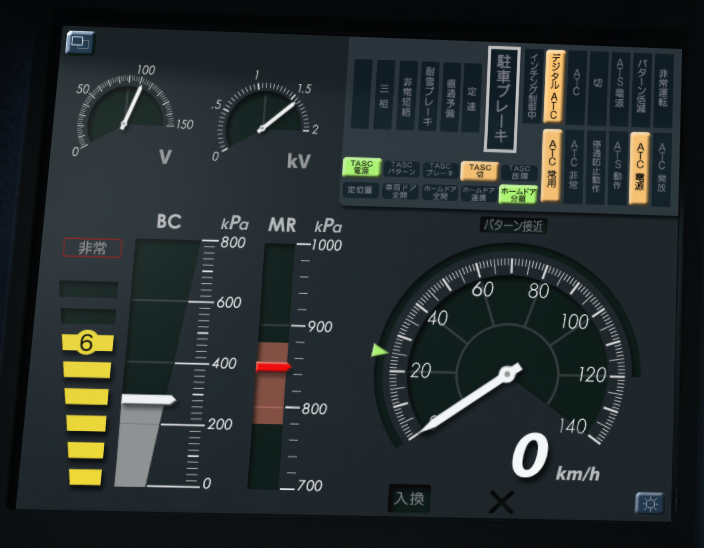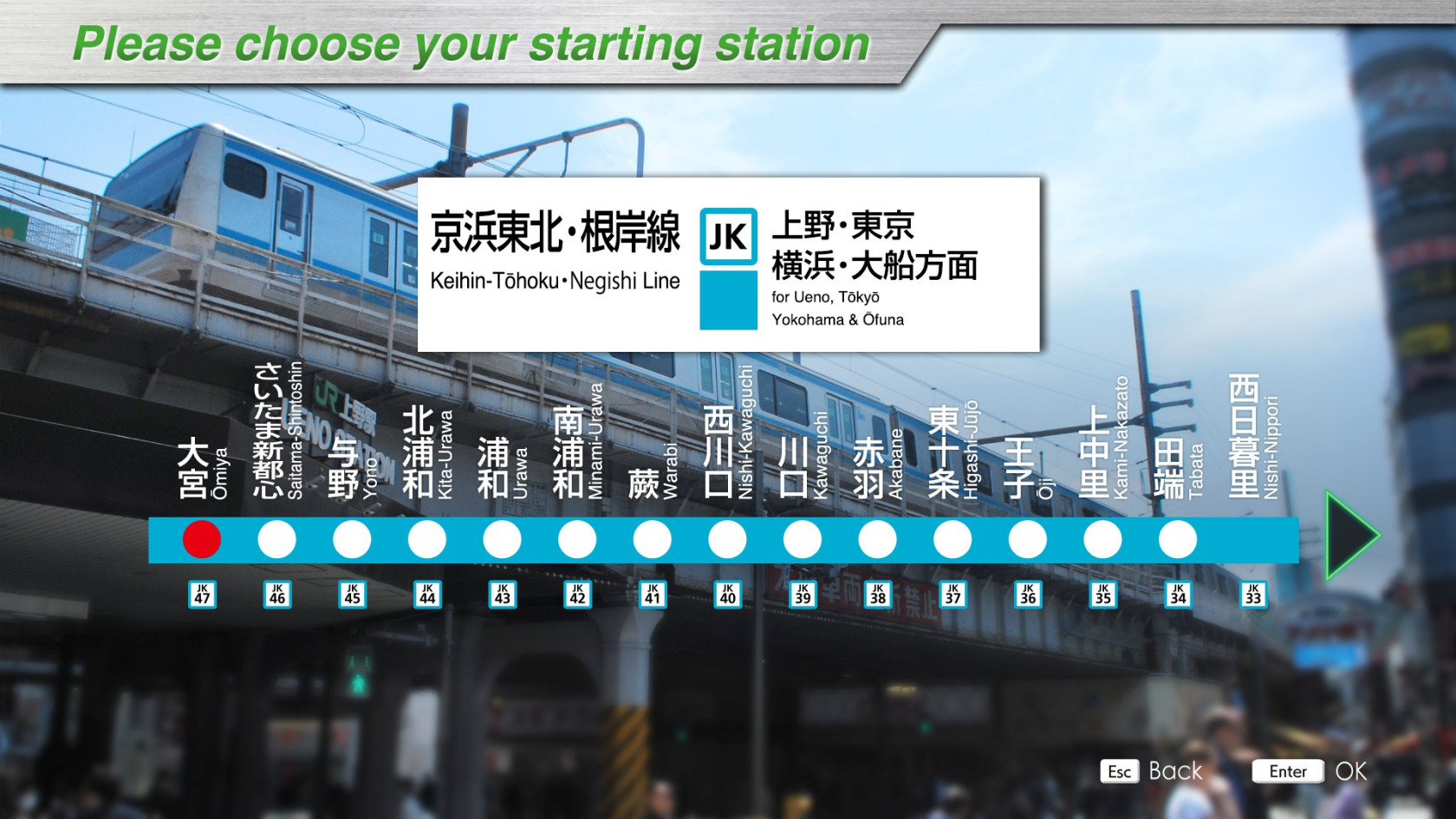Keihin-Tohoku / Negishi Line
Introducing
The Keihin-Tōhoku line is a railway line in Japan's JR East network. It connects Ōmiya in Saitama Prefecture, Tokyo and Yokohama. The line, inaugurated in 1914, has been operating for over 100 years.
The line runs parallel to the JR Yamanote line between Shinagawa and Tabata stations. With a daily ridership of over 3 million, it is one of Japan's busiest commuter lines.
The Negishi Line is a railroad line in Japan's JR East network. It connects the stations of Yokohama and Ōfuna in Kanagawa Prefecture. There is no passenger service specific to the line: trains from the Keihin-Tōhoku line continue their service on the Negishi line.
This line is included in the basic set.
Key data
- Total
line distancelength : 81.2 km - Number of stations : 46
- Safety system : D-ATC
- Train model : E233-1000 series
- Max speed :
- Omiya ~ Sakuragicho : 90km/h
- Sakuragicho ~ Ofuna : 95km/h
- Routes :
- Omiya ~ Ofuna (1275A) : "Rapid" train - 10 cars - 40 stations - 81.2 km
- Omiya ~ Isogo (727B) : "Local" train - 10 cars - 41 stations - 68.6 km
- Omiya ~ Ofuna (1275A) : "Rapid" train - 10 cars - 40 stations - 81.2 km
When stopping in a station, the brake must be set to level 5 minimum, to ensure at least 200kPa brake pressure (otherwise the 200 graduation on the BC section will flash red).
Note that, because the safety system is the D-ATC, the warning lights must be ignored and the Max Speed / Next Limit indicators are empty.
Note also that, although the Akabane station has landing doors, the margin of error remains as configured (and not +/- 35cm as on the Yamanote). What's more, TASC data is not available, so it can't be used in this case.
Console detail
Apart from the gusseted watch and the door-closing indicator in the center of the console, there are 2 displays.
Main screen

The first display shows in the bottom area:
- Brake level, with emergency brake indicator "非常".
- Brake cylinder pressure (BC)
- Main air reservoir pressure (MR). Note that if this falls below the red zone (780kPa), the compressor starts up.
- Speed dial, with limit indicator (green arrow) and the "pattern approach" (パターン接近) indicator.
The upper part contains the electrical voltages and various indicators:
|
|
|
|
TIMS screen (Train Information Management System)

The second screen contains the trip information. The upper part shows the time, speed and distance between the train and Tokyo station (or Yokohama station on the Negishi line).
Below this, you'll find the train number and type (in the yellow frame).
Then, in the center, the left-hand section shows the kilometer ahead, with stations highlighted. Next, the stations to come are shown. In order :
- Line departure time and station (Ōmiya/大宮 - 12:00:10) (disappears after Minami-Urawa)
- The current station (or the one just left) and the next 2 stations, potentially with an arrival time (in minutes - above the line) and a departure time (in minutes - below) (Ōmiya/大宮 - Saitama-Shintoshin/さ新都心 - Yono/与野)
- The next station with a specified arrival/departure time (Minami-Urawa/南浦和 - 12 / 12:30)
- The station and arrival time at the terminus (Ōfuna/大船 - 13:55:30)
Finally, the bottom of the screen shows the different cars. The indicator above each car shows whether the doors are open (lit) or not. The cars can take on 2 colors: blue (engines in use) or orange (brakes in use).
Personal opinion
As the line uses the D-ATC system, it's ideal for beginners or for riding without indicators.
As for the moments I enjoy most, the Negishi section is the most interesting, as it resembles a small line with its curves and tunnels, even though it's still an urban landscape. Crossing the Ara-kawa river is another highlight.
Useful links
Wikipedia : https://en.wikipedia.org/wiki/Keihin–Tōhoku_Line - https://en.wikipedia.org/wiki/Negishi_Line
Driver's guide : https://docs.google.com/spreadsheets/d/1qFyJVimA8cCBda6Iq064m5uuelpWd28X0FDERZQJ1fQ/edit#gid=426048143
Movie of the line : https://www.youtube.com/watch?v=3u3AYsLPxqk
Timetables (in japanese) :

